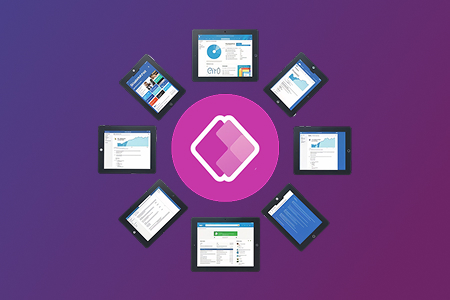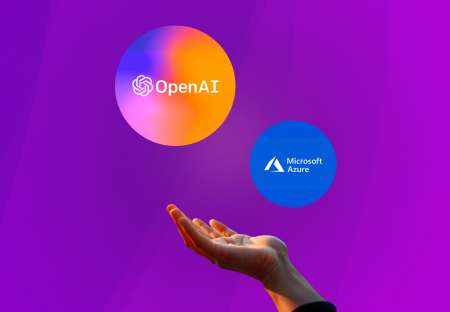Many organizations are adopting DevOps, as it is considered the latest and most popular way of working. DevOps is a culture that helps people work together to continuously enhance existing technology. DevOps Benefits are to develop new products, services, or platforms.
During the DevOps benefits buzz, you might wonder what it entails and if it suits your organization. Over 83% of IT decision-makers adopted DevOps for enhanced business value. Here’s a concise guide on why DevOps suits your tech team, how to implement it, and its role in boosting development speed.
Increasing the development speed is the primary goal of DevOps. Studies have proven that quicker development results in reduced time and resources spent on resolving issues later. There are many different factors to consider when determining what time period qualifies as ‘fast’.
In particular, multiple things can have an impact on the speed at which a team develops software. This article will provide an overview of some of these factors and how they relate to your actual project objectives.
What is DevOps Benefits?
DevOps is made using the words “development” and “operations”. It’s a term that refers to the process by which teams collaborate on software development projects, with an aim of getting them out faster than they would if done manually.
The term DevOps was first used in 2009 by Patrick Debois and Eric Ries in their book The Lean Startup. The idea behind it is simple: instead of having developers build their products using traditional SDLC methods, they should work closely with operations staff who are responsible for actually deploying them into production environments.
This way you can avoid many problems associated with traditional development processes such as long release cycles which can lead to inconsistencies across multiple platforms/environments, slow rollouts due to lack of automation and testing infrastructure, etc.
In 2021, the Global DevOps Market reached a size of USD 5,114.57 million, and it is estimated to reach USD 12,215.54 million by 2026, with a compound annual growth rate of 18.95%.
Current Challenges That Slow Down The Development Speed
One of the major issues responsible for slowing down of the development is the lack of clear communication between the stakeholders and team members. Even being unclear about the specific terminology leads to miscommunication between the client and end developer.
Also, most development projects start from a feature perspective rather than being solution perspective. So it’s very important to align your development with the compelling business need.
Also, 88% of the organizations get the work approved by two or more employees and it takes hours to fulfill the request.
Benefits of DevOps Implementation
- DevOps Benefits is a set of practices that provides advantages to improve the flow of information between software developers and IT operations staff.
- By ensuring that all changes undergo testing before being pushed out to production, DevOps helps to reduce errors and increase productivity.
Automation in DevOps Benefits
Automation refers to the usage of software for performing tasks that could be done manually. DevOps uses automation to simplify manual processes such as deployments or change management. In most cases, this involves automating repetitive tasks so that they can be performed in bulk instead of manually one by one. For instance:
You could have three different servers running your application (A1, A2, and A3). If you need to deploy an update on all three at once then it would take longer if each one had its own deployment process and dependencies. Instead of doing this manually with each server individually, you could create an executable script that does everything for all three servers at once — no more waiting around.
Continuous Integration and Continuous Delivery
Continuous integration (CI) is a software development process that involves building, testing, and releasing code to production. It also involves automating the build and deployment so that your team can continue to focus on writing code instead of manually performing these steps. This means there’s less chance of bugs slipping through the proverbial cracks.
Continuous delivery is when you have automated tests run in your CI environment every time an artifact is pushed out. This way you can quickly identify any issues before they affect customers or end users. If something goes wrong during production deployment, it will only take one person for all affected areas to fix it as soon as possible. Rather than having everyone go back to their desks and work through any issues individually. It also helped 22% of the businesses to operate at the highest security level using advanced stages of DevOps.
How DevOps Acts As A Catalyst To Make The Development Faster?
DevOps is a set of practices that offer DevOps benefits to organizations, helping them develop, test, deploy, and operate software and services faster. It’s a team sport and requires cooperation between developers and IT operations.
DevOps provides a benefit of improving development speed by automating the CI/CD process, which can significantly reduce errors. It also facilitates the automation of deployment processes.It is including manual steps or scripts necessary for deploying applications onto various environments. Such as staging or production environments. Reducing your workload, it keeps track of all changes made during the development phase to ensure smooth application in the next release cycle without any hiccups at any stage of the life cycle, such as the testing stage. More than 77% of organizations rely on DevOps to deploy any software or plan something in the near future. `
Conclusion
DevOps aims to improve the way software is developed and integrated by providing a set of best practices. The goal of DevOps is to reduce the time it takes to build, test and deploy software products. We have seen how it can provide us a benefit of improving our development speed and make our services more reliable. If you are still unsure about it then try it out for yourself. See what DevOps benefits you get from this technology.
Learn More: DevOps Services of Metaorange Digital










